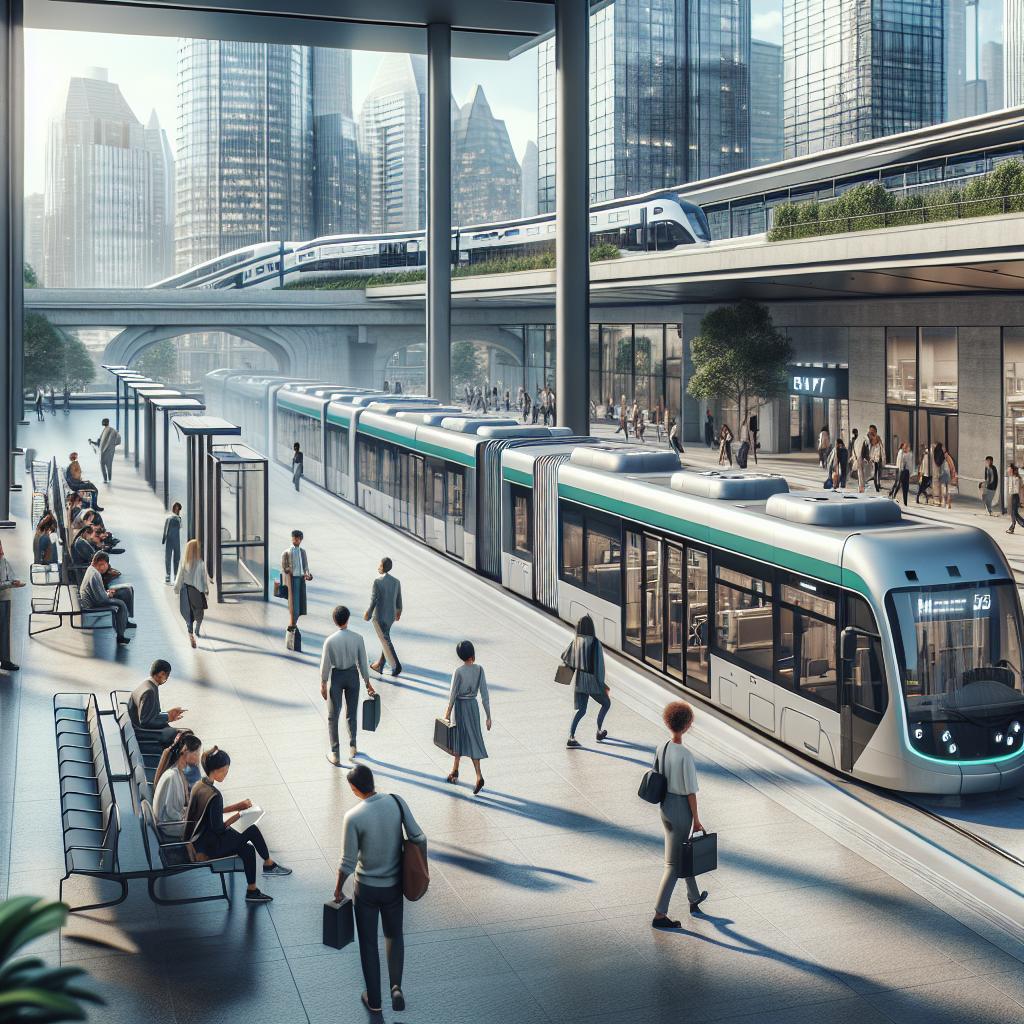Revamping Memphis Transit: An Investment for a Smoother Ride
Memphis is buzzing with conversations about its public transportation system, particularly the Memphis Area Transit Authority (MATA). As many locals know, MATA has been struggling with financial issues, route closures, and even staff layoffs. But the city is determined to turn things around. During a recent forum, Mayor Paul Young opened up about the future of transportation in Memphis and the city’s commitment to improving transit options for everyone.
The Call for Improvement
One of the prominent goals Mayor Young pointed out is the need for 15 to 20-minute wait times on all routes, especially on the most heavily trafficked lines. “What does it take to get to 15 to 20-minute wait times on all of our routes?” he posed, suggesting there’s a significant price tag that goes along with this kind of improvement. While it sounds straightforward, the implications touch on many aspects of urban planning and community needs.
Understanding the Situation
As Mayor Young explained, the city is currently undergoing a detailed analysis of MATA’s operations and governance. It’s a bit of a challenging situation, as the agency has had to deal with major layoffs and an ongoing evaluation of which routes might need to be cut altogether. The financial struggles aren’t just numbers on a page; they are felt tangibly by riders who rely on public transit to get to their jobs, schools, and appointments.
Aiming for an Investable Vision
Young emphasized a crucial point: for the city to secure additional funding for transit improvements, it needs to craft an “investable vision” for its transportation system. This means that the plan has to show potential investors and stakeholders not just the current woes but also a clear, strategic direction on how public transit can improve and sustain itself long-term. By doing this, Memphis can access new dollars that could support programs, reduce wait times, and make the bus system more reliable for all.
Candor About Governance
When it comes to governance of the transit authority, Mayor Young remained open about the fact that its future is still under discussion. The city must assess the structure of MATA to find a model that works better for its needs. As he put it, “the future governance is to be determined.” This openness indicates a willingness to make necessary changes to ensure the system operates efficiently.
Community Support is Key
A collaborative effort is vital to turn MATA’s fortunes around. The mayor acknowledged how important community support is for this transformation. The city relies heavily on local journalism and public engagement to keep everyone informed about developments in transportation. It’s a partnership where regular citizens, businesses, and local leaders all play a role in shaping what public transit could look like in Memphis.
An Eye on the Future
The work ahead is extensive, and Memphis is ready to face it head-on. Young’s comments reflect a hopeful vision where transit is improved, wait times are minimized, and public transportation becomes a reliable option for all. Being able to hop on a bus without worrying about it being late or overcrowded could relieve a lot of stress for everyday commuters.
In concluding his thoughts, Mayor Young reiterated that the ultimate goal is to ensure that the citizens of Memphis have access to a strong and dependable transit system. This is a critical stepping stone for the entire community, one that could bring all kinds of opportunities to those who depend on public transportation.
Memphis is at a pivotal moment, and it seems that residents may soon see some positive changes on the horizon. In the end, it’s not just about improving buses; it’s about investing in the future of the entire city.

Author: STAFF HERE MEMPHIS WRITER
The MEMPHIS STAFF WRITER represents the experienced team at HEREMemphis.com, your go-to source for actionable local news and information in Memphis, Shelby County, and beyond. Specializing in "news you can use," we cover essential topics like product reviews for personal and business needs, local business directories, politics, real estate trends, neighborhood insights, and state news affecting the area—with deep expertise drawn from years of dedicated reporting and strong community input, including local press releases and business updates. We deliver top reporting on high-value events such as Beale Street Music Festival, Elvis Week, and Memphis in May International Festival. Our coverage extends to key organizations like the Greater Memphis Chamber and the Memphis Convention & Visitors Bureau, plus leading businesses in logistics, healthcare, and music that power the local economy such as FedEx, St. Jude Children's Research Hospital, and AutoZone. As part of the broader HERE network, including HEREBristol.com, HEREChattanooga.com, HEREKnoxville.com, and HERENashville.com, we provide comprehensive, credible insights into Tennessee's dynamic landscape.






